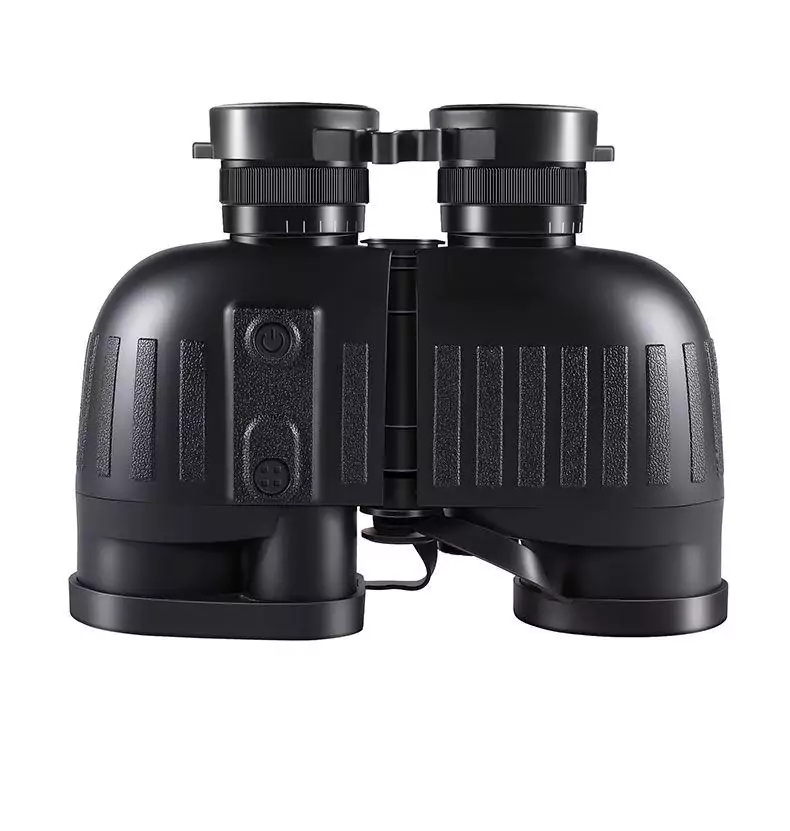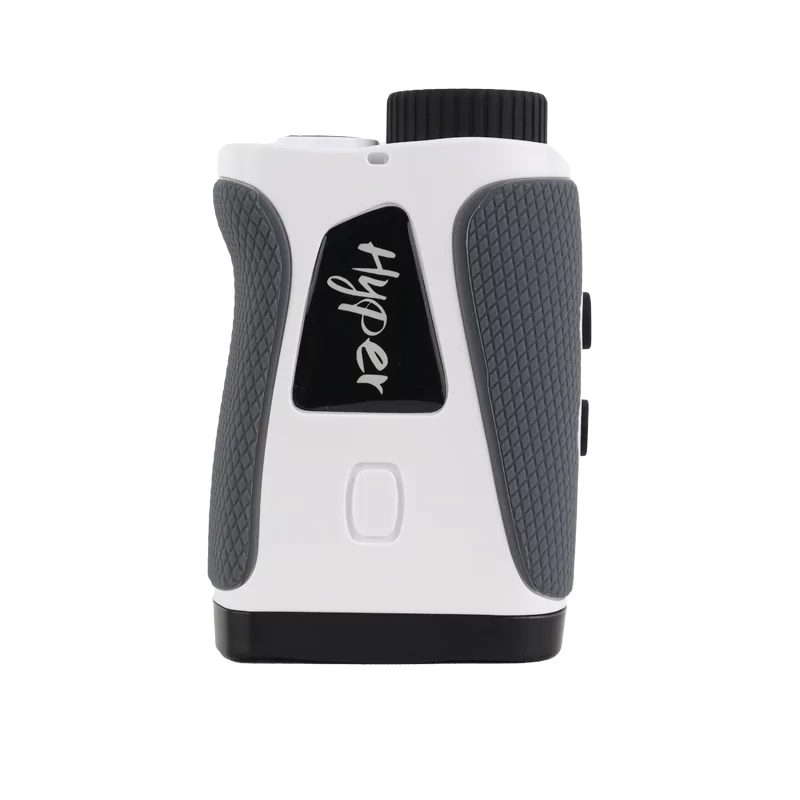
Request


Laser rangefinders serve as vital equipment for exact distance measurement. Industries like surveying, sports, and defense rely heavily on them. Their precision hinges on several elements. Hardware quality, surrounding conditions, and sophisticated signal processing all matter. This piece examines the main factors affecting measurement exactness. We look at optical parts, software algorithms, and calibration methods. Understanding these ensures dependable operation in real situations. Knowing these points helps users get the best accuracy, whether for work or play.
These precision tools see wide use. Surveying, forestry, sports, and military tasks all employ them. Many technical and environmental aspects influence their correctness. Each factor plays a vital part in giving trustworthy distance readings.
A laser rangefinder's basic setup has three elements. It includes a laser emitter, a receiver, and timing electronics. How good these parts are greatly affects precision. Several things help decide distance calculation accuracy. The laser diode's steady wavelength matters. So does the photodetector's responsiveness. The resolution of the time-of-flight (ToF) system is also crucial.
Top-tier rangefinders give excellent results. They use quick photodiodes and modern timing setups. This lets them measure within ±1 meter or less, even over long distances. Cheaper units might be less exact. Their parts often have looser tolerances.
Hardware isn't the whole story. Built-in software algorithms do critical work too. They turn raw data into useful measurements. These routines remove interference. They make up for signal weakening. Taking multiple pulse averages improves correctness too.
Better devices use live correction methods. These handle signal fading. They also manage reflections from see-through objects. Clever filtering separates true target signals from background noise.
The optical system steers the laser beam. It handles both sending and receiving. Therefore, lens quality is important. Precise alignment counts too. Anti-reflective coatings affect results. Bad optics cause problems. They might scatter the beam. Or they could absorb some light. This cuts the working range. Errors in signal detection might happen.
Factories boost optical performance through careful work. Precise processing helps. Special coating treatments make a difference. Telescopes gain from this. The same idea works for laser rangefinders. Good optics guarantee efficient laser signal movement.
Hemusun Optical Instrument Co., Ltd. knows these issues well. They blend top optics with careful coating steps. This makes sure every part aids correct measurements.
Outside factors cause variations. These can hurt even advanced rangefinders. Knowing these effects is key. It helps use the tools well in actual field conditions.
Things floating in air cause trouble. Dust, fog, rain, or snow scatter laser beams. Sometimes they absorb them. This happens before reaching the target. Or it occurs on the return trip. Heat layers may bend light paths too. This refraction brings angle mistakes over long spans.
Moisture changes how beams travel. It alters the air's refractive nature. These issues grow worse at greater distances. Why? Small angle shifts mean big place errors there.
Background light changes sensor performance. Strong sunlight can drown out faint return signals. This happens most on dull surfaces. Think dark cloth or matte finishes. Shiny targets act differently. Road signs, for example, give powerful returns. Readings become more precise.
The target's look affects things too. Smooth white surfaces bounce more energy straight back. Rough black ones scatter it away.
Hemusun Optical Instrument Co., Ltd. tackles these difficulties. They build systems with better signal sorting. This keeps accuracy up even when visibility drops.
Distance itself changes measurement correctness. Hardware limits and beam behavior both play roles here.
Under 100 meters, most modern rangefinders work very well. Little beam spreading occurs here. Return signals stay strong. But past several hundred meters, things change. Kilometers bring more issues. Signal power fades. Air weakens it. The beam also fans out more.
Timing mistakes matter more at long range too. Why? Tiny errors multiply fast. Light speed is about 300,000 km/s. A nanosecond slip means big distance errors.
Laser beams don't stay perfectly tight. They widen slightly while traveling. This divergence has effects. At long ranges, the beam hits a bigger target area. It might bounce off wrong objects near the true spot.
This causes uncertainty. Which part got measured? Clear focus helps. Software that fixes multiple reflections also works.
Hemusun Optical Instrument Co., Ltd. reduces these problems. They use exact beam tightening methods. Smart software filters join in. This gives steady accuracy across all distances.
Holding the unit still matters more than many think. This is especially true without a support mount.
Handheld use brings tiny shakes. These move the aim between laser pulses. Targeting becomes inconsistent. Long ranges magnify this issue. Why? Small angle changes mean large misses downrange.
Tripods stop motion problems. They lock both horizontal and vertical positions. This allows repeated shots at the same spot. Scans also improve.
Movement is unavoidable in some places. Vehicles and boats vibrate constantly. Cushioning systems become essential here. Gyro stabilizers sense shakes instantly. They tweak the light path to compensate.
Jitter removal tech suits many situations... It gives steady viewing... Rangefinders use similar anti-shake solutions. These boost use in rough settings.
Hemusun Optical Instrument Co., Ltd. applies these ideas across its products. Results stay reliable. Handheld or vehicle-mounted, field conditions won't spoil measurements.
Modern devices gain much from software. It does more than show simple distance numbers. Linking to outside systems adds useful awareness.
Algorithms now fix errors instantly. They use data from surroundings. Temperature and humidity sensors help. Angle compensators (tilt meters) assist too. Past signal patterns guide them. These adjustments turn raw ToF data into better numbers. Trust goes up under changing field states.
Advanced firmware helps as well. It changes settings automatically. Noise levels or ground features guide this. No user input is needed.
Laser rangefinders grow powerful when combined. Add GPS units or mapping tools (GIS). Now they survey land accurately. They plot landscape details on real coordinates. This is key for building plans or forest studies.
Such links add global position awareness. Measurements aren't just from the user's spot. They fit world-wide grids. This helps many mapping tasks.
Hemusun Optical Instrument Co., Ltd. looks ahead. Its software plan aims for smooth GIS joining. Smart correction rules enter its firmware. This sets new accuracy levels for tomorrow.
Even excellent tools lose edge over time. Without proper checks and care, performance drops. Slow decline happens if ignored.
Calibration matches timing circuits to known lengths. Standard references are used. Scheduled checks stop error build-up. Why do errors grow? Parts age. Heat changes affect them. Certified accuracy needs this for work tasks. Months or years of use demand it.
Yearly calibration is common advice. Do it in controlled lab settings. But frequent users might need it sooner. How much you use it matters. Harsh conditions play a role too.
Dirt on lenses or mirrors cuts light passage. Scratches cause stray light. Knocks can misalign parts. All these quietly harm performance. Errors show up later during use.
Regular cleaning helps. Use soft cloths. Protect units during travel and storage. Check parts under magnification now and then. This keeps optics working long-term. Surprise failures during jobs become less likely.
Hemusun Optical Instrument Co., Ltd. backs these needs strongly. Strong support services exist. Warranties cover faults. Repair shops stand ready. Calibration help is offered. Production stresses strict quality too: Quality control gets heavy focus... Products must meet set standards.

This firm grows fast in the precision optics field.
We focus on optical tools. Research, development, making, and sales define us. Science work and industry checks both matter. Our R&D team pushes hard. Material science and light engineering see fresh advances.
We know microscopes and telescopes. But our goods serve many areas... High-exactness measuring tools fill our line... We aim for small yet strong devices. Pros get spot-on precision. Hobbyists gain portable power everywhere.
ISO-certified plants show our care. We stress each step... Exact making steps are used... Full control exists from start to end. Lens coating gets attention. Final assembly follows strict rules. Every unit meets global marks. Today's experts demand no less.
Conclusion
Laser rangefinder accuracy depends on a blend of high-quality hardware, advanced software processing, and optimal environmental conditions. Key factors like optical precision, signal algorithms, calibration, and user stability all play crucial roles. By understanding and managing these elements, users can achieve reliable measurements across various applications—whether in surveying, sports, or defense. Companies like Hemusun Optical Instrument Co., Ltd. exemplify how cutting-edge engineering and rigorous quality control can deliver consistent performance. For best results, regular maintenance and mindful usage remain essential to sustaining precision over time.
Most pro models hit ±1 meter up to 1000 meters. Better units can do under one meter sometimes. Surroundings and target shine change this.
Yearly checks are standard. But heavy users might want them every six months. It depends on how hard you push it.
Yes. Shiny surfaces greatly strengthen return signals. This helps a lot on dull items. Think blacktop roads or leafy plants in sun.